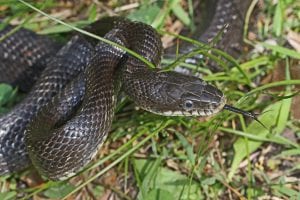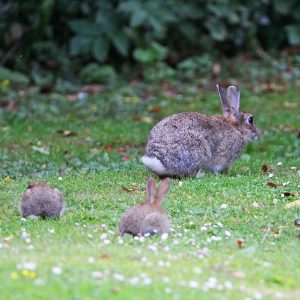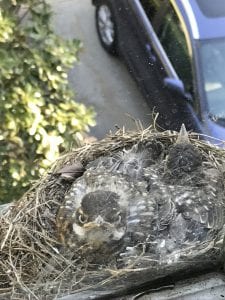Urban Wildlife Encounters
- Aug 3, 2020
Written by Rachel Rice, Explore Nature! Naturalist
Not long ago, there was a posting on a neighborhood website. The author shared a photo of a large (probably 5 feet) snake in a backyard tree. A few commenters thought it may be someone’s lost or escaped pet. It turned out to be a native black rat snake – an avid climber, docile and beneficial to the ecosystem. Its lengthy, patterned body would lead many to believe it might be a captive python or boa; black rat snakes can get up to 7 feet long in the wild – the largest in Ohio.

Running across any snake can be a little startling for some. One thing to keep in mind is that here in Hamilton County, no known venomous species have been reported. Smaller ones feast on invertebrates, lizards, frogs and baby rodents, while larger ones may go for bird eggs, adult rodents and even other snakes. Fortunately, this particular backyard visitor was left alone to go on its way. But what about the young fawn seen near the side of the road or the nest of bunnies left under a bush in a flower bed? Worried citizens often call local park departments to ask for advice. While there are some wildlife agencies that rescue and rehabilitate, oftentimes, the advice is to leave them be. Mother rabbits do most of their nursing at night. They leave the babies in a nest covered with dry grass over a layer of her own fur. Throughout the day, she may stay close by in a hidden area of brush. Nighttime is much less conspicuous to neighborhood pets and the eyes of diurnal hawks. Similarly, a mother deer will leave a fawn alone to go forage for food.

But what about the flailing baby bird that falls from a nest? Sometimes you may hear the mother nearby making a lot of distress noise. In that case, if the nest is within reach, the fledgling can be set back inside with no repercussions from mom (many birds do not have a strong sense of smell, so the scent of a human will not be an issue). If the nest is too high, placing it on a lower branch will at least get it off the ground away from some potential predators. If there is an injured animal or young one seemingly orphaned, there are some permitted rehabilitators you can contact for support:
https://www.facebook.com/secondchancewildlife.org

Often, the most helpful ways to protect wildlife are preventative and easy: securely stow away all trash, drive carefully through wooded areas and keep pets contained. The fauna (and flora) will thank you!
